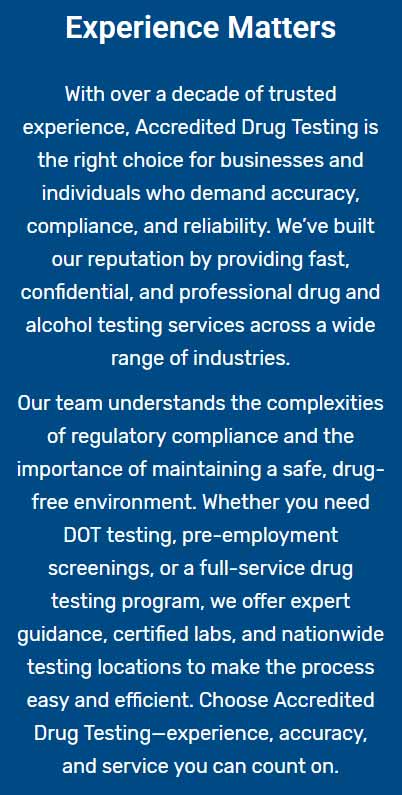What it is, How it works
Hair testing has emerged as an effective method for identifying drug and alcohol consumption. Hair captures a long-term record of alcohol and other drugs by locking biomarkers within the fibers of the elongating hair strand. When acquired close to the scalp, hair can offer a detection period of approximately 3 months for alcohol and other substances. Hair collection is straightforward, fairly resistant to tampering, and convenient to transport.
A sample of 1.5 inches consisting of about 200 hair strands (comparable in size to a #2 pencil) from the scalp provides 100mg of hair, the preferred sample amount for screening and confirmation. For EtG, additional tests, and/or tests over 10 panels, a specimen of 150mg is advised. We suggest using a jeweler’s scale to measure the specimen. If scalp hair is not accessible, an equal quantity of body hair can be used. The term "head hair" refers solely to scalp hair. Body hair encompasses all other kinds of hair (facial, axillary, etc.).
Process Overview
The primary steps in lab processing of a drug test result include Accessioning, Screening, Extraction, and Confirmation.
Accessioning includes the initial processing of a sample into the lab’s system. This process verifies that the sample was properly sealed and shipped, assigns a random LAN (Laboratory Accessioning Number), and completes any remaining data entry not supplied by an electronic chain of custody system.
Screening entails an initial rapid check for drugs of abuse. Though Screening helps exclude drug usage for most samples economically, a positive screen needs confirmation for court acceptability. Any samples presumed positive in Screening necessitate further confirmation.
If a sample is indicated as positive in the Screening stage, more hair is extracted from the initial sample for Extraction. In this phase, drugs are isolated from hair at a significantly lower concentration than in other methods (e.g., urine or oral fluid), which is why hair drug screening is considered the most challenging to execute.
Positive screening results are confirmed using GC/MS, GC/MS/MS, or LC/MS/MS. Before confirmation, all presumptive positive samples undergo washing if required. The entire laboratory process from Accessioning to Confirmation is assessed under both the CAP (College of American Pathologists) Hair designation and the ISO/IEC 17025 accreditation standards.
Advantages of hair drug testing:
- Extended detection window: Hair drug tests can uncover drug use for up to 90 days, unlike urine tests which have a more limited detection timeframe.
- Challenge to falsify: Cheating a hair drug test is highly challenging, enhancing result accuracy.
- Provides historical insight: It illustrates a drug use pattern over time, not solely recent use.
Limitations:
- Inability to detect recent use: Drugs take about 5-7 days to become detectable in hair.
- Expense: Hair drug tests typically cost more than other drug testing approaches.
- Results variability: Elements like hair color and individual hair growth variations can influence drug metabolite concentrations in hair.
Note: While commonly termed "hair follicle tests", the test itself evaluates the hair strand, not the scalp’s hair follicle.
Extended Detection Window
The extended detection window of hair follicle testing in Glenburn, PA, is a significant advantage. It can detect substance use for up to 90 days, facilitating a thorough review of an individual's drug history. Employers can gain insights beyond the temporary window offered by shorter-term testing methods, enhancing their decision-making processes.
- Long-term analysis benefits hiring.
- Comprehensive data informs compliance checks.




